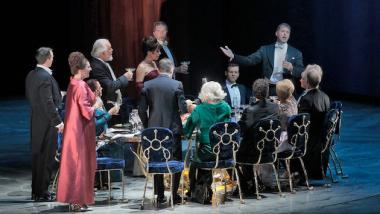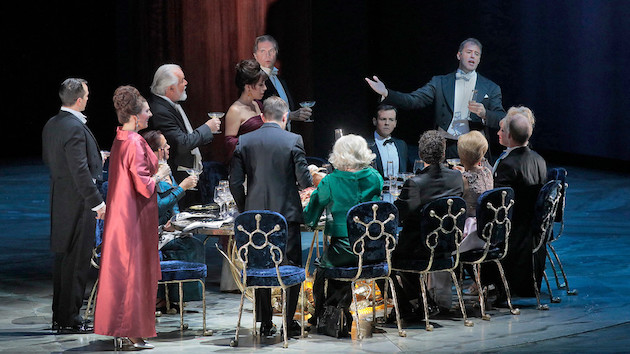
When the guests arrive at a posh postopera dinner party and tell each other how “enchanted” they are to be there and meet one another, it’s an ironic premonition of what’s to come. By the time the party finally does break up, after a harrowing immersion in cruelty, fear, spasmodic sexuality, and near-anarchy, air-kissing enchantment has swerved into the darkest bewitchings of the human heart.

Anyone who’s seen Spanish filmmaker Luis Buñuel’s 1962 surrealist masterwork The Exterminating Angel is likely to have the mysterious room that no one can leave embedded somewhere in the subconscious. In a brilliantly corrosive translation from screen to stage, composer (and conductor) Thomas Adès and his co-librettist (and director) Tom Cairns have turned Angel into a bitter, dankly funny, shiver-inducing opera.
The piece is a hot-button hit in the fall season of New York’s Metropolitan Opera. Thanks to the Met’s invaluable Live in HD series, it arrived Saturday, Nov. 18 on movie screens in the Bay Area and around the world. An encore broadcast is set for Nov. 29. Opera lovers — or novices — should mark their calendars.
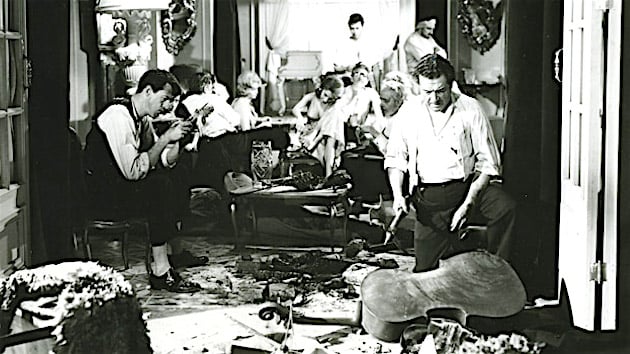
The Buñuel film, which can be unpacked as everything from a political parable to an investigation of conscience and morality to a psychosexual thriller, is an ideal choice for Adès. Powder Her Face, his 1995 chamber opera seen here in a vivid West Edge Opera production in 2016, signaled his avidity for frank and unswerving material. Based on the real-life story of the Duchess of Argyll, Powder was a tabloid catalog of sex, scandal, and humiliation, with a rancidly ripe score to match.
Angel unleashes a broader and more probingly expressive range of this fearless composer’s gifts and instincts. The material itself, which might seem static given the collective inertia of the guests, is in fact both musically and dramatically febrile.
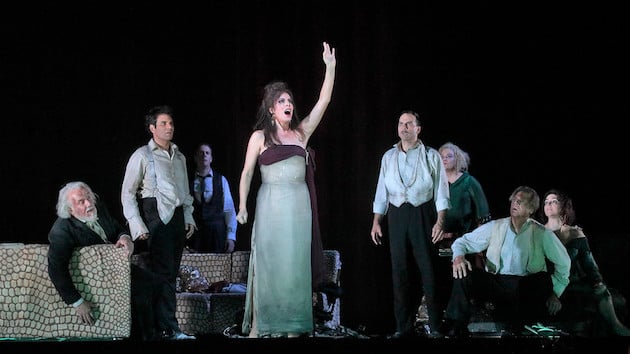
Music figures importantly in the action. An opera diva (soprano Audrey Luna, singing at the highest, borderline dog-whistle peak of her range) is both feted and crudely insulted by her gossipy guests. Later, in her final, wrenchingly intense aria, she becomes the agent of their release. A pianist (played by mezzo Christine Rice), provides a mordantly lulling interlude before the storm. For vocal variety, along with a hint of incest, the opera tosses in a countertenor (Iestyn Davies) suffering from ulcers and a possible crush on his sister (soprano Sally Matthews).
In an intermission interview with Susan Graham, Adès said the opera hardly got a laugh when it played in London. Blame it on national stuffiness. Angel is full of sly jokes, both verbal and musical. After pawing one of his patients (mezzo Alice Coote), a psychologist (bass John Tomlinson) offers a self-justifying lecture on transference. He also has an unorthodox fondness for diagnosing terminal baldness. Even when the guests descend into OCD behaviors and other symptoms of malaise, a bleakly comic absurdism gleams through. Three sheep and a bear turn up. So does a chorus of leering curiosity seekers held at bay outside by club-wielding police. Suffering, as Kafka had it in “The Hunger Artist,” can bestow celebrity.
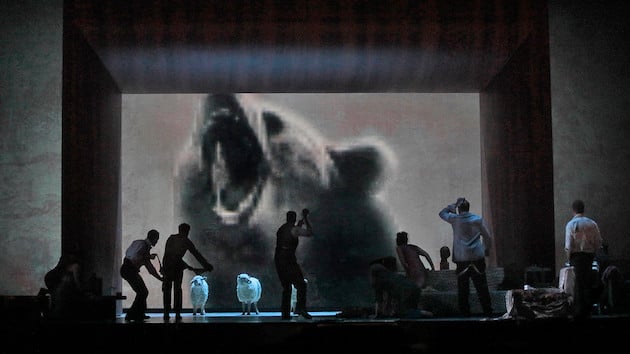
In the orchestra pit, which is visited now and then by the HD cameras, Adès oversees an orchestra with its own peculiarities. They include an ondes Martenot, an electronic instrument whose wavering wails are straight out of 1950s horror films, and a complement of tiny violins (1/32 normal size) that reinforce the high-pitched soprano lines. Trombones and six unnervingly hammered drums form one ominous bridge between acts.
With all the principals stuck onstage together, the opera becomes a de facto ensemble piece. One of the score’s wonders is the way Adès builds his vocal lines. The characters use the same madly meandering yet somehow propulsive musical grammar, but sing in their own idiosyncratic voices. In under three hours, the characters become distinct and deeply developed presences. Two dramatic high points come in a love-suicide duet that plays like something refracted through a far-off Wagnerian mist and a heartsick mother’s starkly simply duet with her young son. The quality of the singing and acting — much of it seen in intimate close-ups — is consistently superb.
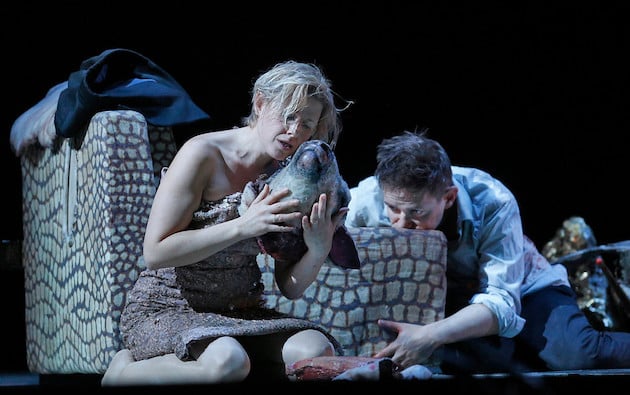
The Exterminating Angel plays especially well in the HD format. The cinematic nature of the presentation, with long shots, close-ups, quick cuts and pans, echoes the Buñuel source without any attempt to mimic the original. The viewer has a kind of enriching double awareness — of seeing a “live” opera that is simultaneously and artfully filmic.
When the guests are finally freed from their captivity, the camera pulls back to observe the set’s mighty turntable rotate. Slowly, as if stunned into a kind of passivity, the surviving ravaged partygoers exit the room and advance downstage. The Adès catches score captures their powerfully mixed emotions — and ours — to the end, mourning and moodily celebrating a dinner party they’ll never forget.

